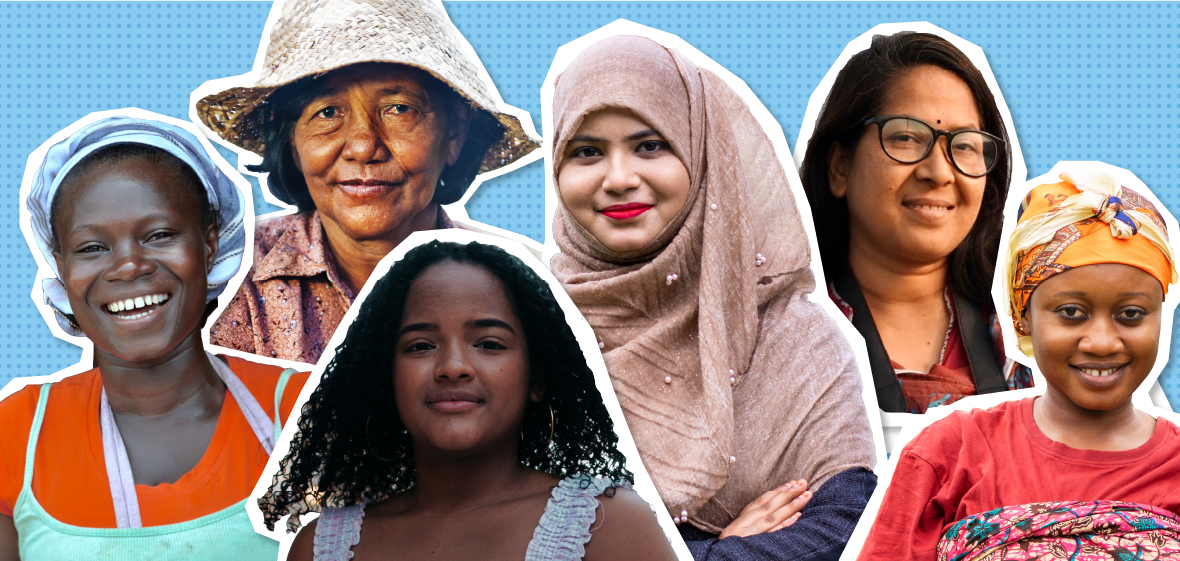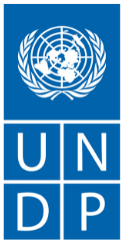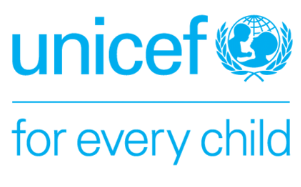In 2015, at the ThirdInternational Conference on Financing for Development in Addis Ababa, the UnitedNations (UN) issued a rallying cry to governments around the world. "It isclear that we have not invested sufficiently in gender equality,” said then UNSecretary-General Ban Ki-moon. With as little as 10% of official developmentassistance targeting women, he called countries to action: “This has to changenow.”
Fast-forward to 2022, and there is significant cause for hope that financingfor gender equality is increasingly entering the mainstream. (If you remain sceptical, read with our story on African innovations in gender-responsive financing.) While nationalbudgets, private sector investment, and domestic and international financialsystems still impact and serve men and women differently, the gap is beginningto close with the help of more responsive financial tools and frameworks thatactively seek to address the gender gap.
So, with #BreakTheBias theoverarching theme of this year’s International Women’s Day celebration, weexplore the links between the Sustainable Development Goals (SDGs) and gender-targetedfinancing, highlighting the reasons why women must have a seat at the table andwhy INFFs are key to tackling existing biases within the policy, planning, andfinancing of sustainable development.
Technical guidance note: Mainstreaming gender equality in Integrated National Financing Frameworks
Women as Agents of Change
The links between a more equitable society and the SDGs are fundamental, with the empowerment of women underpinning the very core of these objectives. Unfortunately, the financial disparities that exist between men and women in the 21st century are still a defining challenge —particularly in developing countries.
Globally, 1 billion women worldwide remain outside the formal financial system, with only half of the world’s women participating in the workforce—often in informal employment or in jobs that pay little attention to labour laws and lack social protection. Women spend less time in education than men, and those that do become members of the workforce are paid an average of 23% less, while also spending more than twice as much time on unpaid care and domestic work.
Limited access to education, technology, information, and materials for personal development help reinforce this, but gender-blind financing policies that fail to acknowledge these disparities and equitably distribute public budgets and private finance are also to blame.
These systemic failures are underpinned by a lack of access for women at the planning and policy-making stage. At the local, regional, national, and global levels, women are often excluded entirely or given limited voices in decision-making processes, while girls, so often a part of this unrecognised workforce, have no voice at all.
The bottom line? Women are already agents of change, substantially contributing to the national and global economy in ways that remain unrecognized, unrewarded, and unprotected—whether through childcare or domestic work, for example, or when trying to grow formal businesses while facing a $300 billion shortfall in investment.
Addressing these facts, and ensuring women have access to the universal rights of work and education, is a crucial step in furthering gender equality. However, this can only be achieved by integrating gender considerations into financing for development decision-making, looking beyond budgets and applying a gender lens to all forms of financing to empower women and girls at every level of society.
Addressing the Gap Between Policy, Planning and Finance for Women
In 2016, Bangladesh conducted its first development finance assessment (DFA), a precursor to the country’s INFF process. In 2021, Shohel Rana, programme analyst for UN Women in Bangladesh, reflected back on this time: “In 2016, …there was no mention of gender issues at the macro level and gender-responsive budgeting was not integrated into the DFA process.”
However, with the current revision of the DFA, in its last stages of finalisation, gender equality was formally and firmly part of the process. In particular, focus was given to eradicating unpaid labour, specifically for the disproportionate number of women involved in many domestic economic activities, such as household chores, care work and agriculture, without remuneration.
What a difference five years can make.
In Bangladesh, and in 70+ countries around the world, adopting the INFF approach provides governments with the opportunity to consider a huge range of diverse funding options through a gender lens. This includes domestic public finance, domestic private finance, international public finance, and international private finance.
Addressing this broad and often nebulous landscape is crucial, as it helps countries take stock of numerous financial sources and align financing flows with their goals—including gender equality. In many countries, this means enabling governments to channel and track financial flows towards projects that empower women.
With most ongoing INFFs including a focus on gender equality, they also have the capacity to deliver numerous other benefits when considering SDGs, some of which we’ll explore below.
Making sure women have a seat at the table
Historically, a lack of women’s perspectives in national development planning and budgeting processes has reinforced existing gender inequalities. Today, countries are learning from mistakes of the past and integrating the opinions and viewpoints of women into their INFF processes—and it’s already leading to more innovative governance arrangements.
To kick start the integration of ongoing gender-responsive finance work within the INFF process, Nigeria’s Ministry of Finance, Budget and National Planning started with a “minimum viable ecosystem”, a small group of gender experts that could galvanise quickly. Over time, they brought in more and more experts, starting with the budget office, the IMF, and UN Women. This coalition has enabled the government to remain agile, build momentum and set a clear vision for what they are trying to achieve.
We sat down with Nabila Aguele, Special Adviser to Nigeria's Minister of Finance, Budget and National Planning, to take a look at how Nigeria is mainstreaming gender equality within its INFF.
A few hundred miles away in Gabon, something similar is happening, as highlighted by Serge Arman Mboula, the UNDP National Coordinator for INFF in Gabon. “Gabon never really had proper dialogue mechanisms between gender equality and finance stakeholders. Now we’re collaborating with UN Women,” said Serge.
Together, women, and those representing women’s goals such as ministries and departments of gender, women’s organisations, technical committees on gender equality, and development partners like UN Women, are planning a more holistic approach to gender equality through comprehensive and targeted financing programmes, incorporating diverse actors and new perspectives from the very beginning.
In Colombia, awareness-raising is key. UN Women is designing a lecture for public servants and civil society organisations to strengthen the integration of gender perspectives within planning and budgeting processes.
Identifying and adopting the right policies
Most countries already have national plans, policies or roadmaps that identify goals for advancing gender equality. Ensuring that these plans are costed correctly and backed up with solid financial strategies is key to their successful realization. For many countries, this means starting with national budgets.
Through their INFF process, Mongolia’s Ministry of Finance piloted gender-responsive budgeting for the first time in two ministries. “The main goal is to ensure that all genders equitably benefit from the services provided by the government,” said Sanjaa Mungunchimeg, Mongolia’s Deputy Minister of Finance.
Mongolia is also looking beyond public budgets to the financial sector, encouraging the development of gender-responsive policies, products, criteria, and incentives to be introduced in the banking and non-bank financial sector.
In Bosnia and Herzegovina, after significant delays caused by the outbreak of Covid-19, authorities formally endorsed gender-responsive budgeting in March 2021. It was no mean feat, said Irma Zulic, UN Women Project Manager. “The country has a complex administrative structure and there are three levels of government that need to engage with the ministries involved.”
Since this process was entirely new, there was a need to build capacity to restructure the country’s finance framework and integrate gender considerations into the applied methodologies. From this process, Zulic learned that there’s no such thing as a “one-size-fits-all approach”. Each country should devise their own tailor-made ways to incorporate gender-responsiveness into their budgets. This realization is perhaps key to identifying and adopting the right policies in any country, as each will have its own set of unique challenges.
For example, in Cabo Verde, directly targeting the private sector to bridge the gap between investors and small-scale entrepreneurs was identified as a way to build resilience after the pandemic and reduce reliance on domestic public resources and official development assistance. This resulted in two innovations: the Negocia platform, a digital marketplace targeting female entrepreneurs, and the Fundo Lavanta, a revolving fund that provides seed funding to underrepresented entrepreneurs. During the first week of the fund’s launch, 54% of all applications were from women.
Backing up rhetoric with data
While mainstreaming gender into the financing policies, reforms and instruments within a country’s financing strategy is key from the outset of an INFF process, ensuring investment is effective after it has been delivered is an ongoing challenge. Here, gender-disaggregated data plays a crucial role, enabling monitoring that continually feeds back into the government’s financial decision-making.
Countries further along in their INFF journey are already leveraging data to improve the process. Colombia’s INFF is drawing on previous government efforts in gender budget tagging to review, diagnose, and propose better pathways for channelling resources towards gender-responsive projects and programmes.
UNDP Colombia explains why gender equality is central to Colombia's INFF process.
Gabon, too, has committed to developing their INFF under a gender lens. According to Serge Arman Mboula, gender-sensitive budgeting will introduce “pink markers” into the budget process, helping the government identify gender-related expenditures when making decisions and track spend on programmes and projects that enhance gender equality. All relevant stakeholders, such as the Ministry of Social Affairs and Women’s Rights and women’s civil society organisations, are involved.
Similarly, in the Philippines, the Department of Budget and Management and the National Economic and Development Authority have incorporated budget tagging within their INFF. The exercise will allow the government to identify and track expenditures for, and investments in, select SDGs, including SDG 5 and those that have gendered targets in health and education.
Both data-driven approaches will help their respective governments assess how much money is allocated to gender-focused projects and programmes, measuring the scale of the financing gap for the country’s gender equality goals. These gaps will inform future strategies for more efficient and effective planning, budgeting, and utilization of resources for financing gender equality, ensuring everyone, regardless of gender, benefits from government services.
The future of gender equality and INFFs
As the financing landscape continues to evolve, INFFs are a valuable tool for building more inclusive and integrated financial frameworks that benefit all stakeholders and leave no woman behind.
Taken together, each of these examples highlights the potential of INFFs to help governments address both conscious and unconscious biases and prejudices towards women and girls within financing for sustainable development.
Many countries are just at the beginning of their INFF journey. As more countries begin to integrate gender dimensions into their financing policies, reforms, instruments, and platforms, we will continue to capture their experiences and distil useful lessons. We look forward to sharing what we learn along the way!
Explore the INFF blog for more examples of INFF innovations and read our technical guidance on mainstreaming gender equality. Feel free to reach out to the platform via Twitter at @INFFPlatform or admin@inff.org to share how an INFF is helping finance gender equality in your country.














